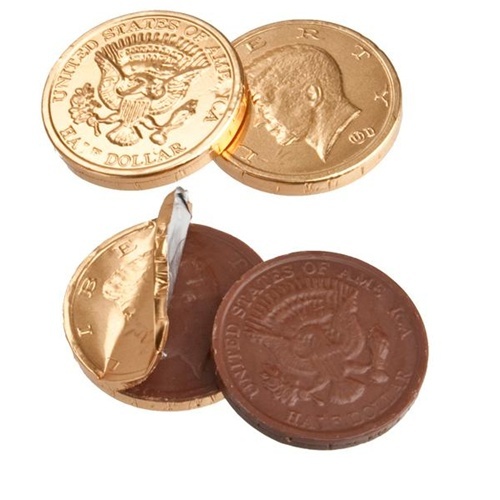The Four Chocolate Coins

Alexane has four chocolate fair coins.
She flips all the coins and eats those that fall on head.
She flips the coins not eaten (those that fell on tail) a second time and eats those that fall on head.
What is the probability that Alexane has eaten more than 2 coins?
If the probability can be expressed as b a , where a and b are coprime positive integers, find a + b .
The answer is 445.
This section requires Javascript.
You are seeing this because something didn't load right. We suggest you, (a) try
refreshing the page, (b) enabling javascript if it is disabled on your browser and,
finally, (c)
loading the
non-javascript version of this page
. We're sorry about the hassle.
2 solutions
Let X be the number of coins eaten at the first set of tosses, and let Y be the number of coins eaten at the second set of tosses, so that Z = X + Y is the total number of coins eaten. Then P [ Z ≤ 2 ] = = = j = 0 ∑ 2 P [ ( Z ≤ 2 ) ∩ ( X = j ) ] j = 0 ∑ 2 P [ X = j ] P [ Z ≤ 2 ∣ X = j ] = j = 0 ∑ 2 P [ X = j ] P [ Y ≤ 2 − j ∣ X = j ] 1 6 1 × 1 6 1 + 4 + 6 + 1 6 4 × 8 1 + 3 + 1 6 6 × 4 1 = 2 5 6 6 7 so that P [ Z > 2 ] = 1 − 2 5 6 6 7 = 2 5 6 1 8 9 , making the answer 4 4 5 .
Relevant wiki: Probability - Rule of Product
The probability that any given coin is not eaten i.e. (tail, tail ) is (1/2) (1/2)=1/4.
The probability that a coin is eaten is (1-1/4)=3/4.
The probability of eating 4 coins is (3/4) (3/4) (3/4) (3/4)= 81/256.
The probability of eating 3 coins is (3/4) (3/4) (3/4) (1/4) 4=108/256.
The probability of eating more than 2 coins is 81/256 + 108/256 = 189/256.
189+256=445